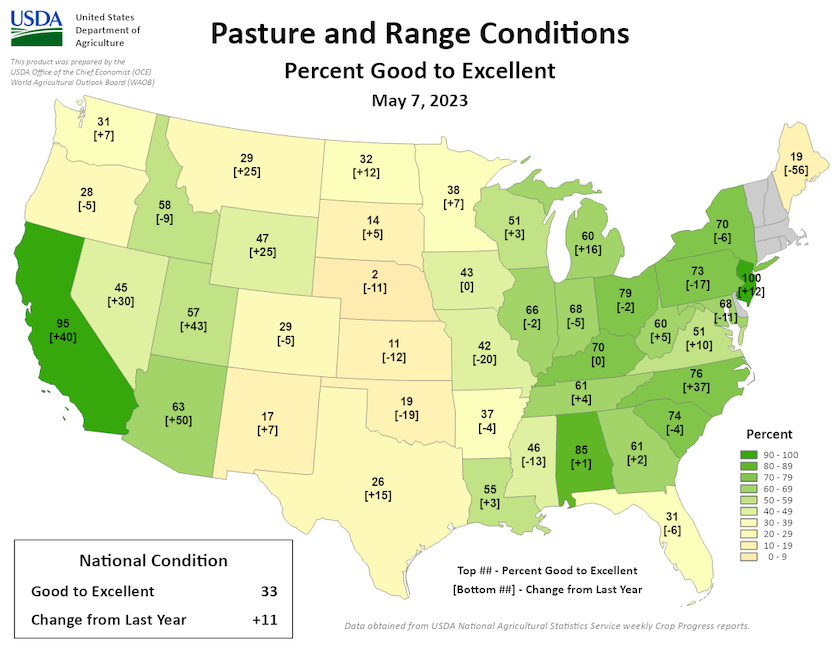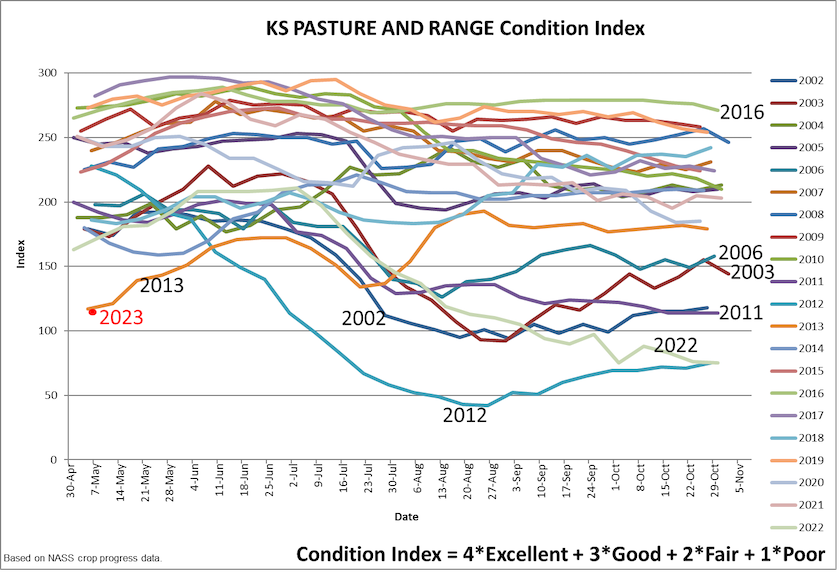USDA Just Provided the First National Snapshot of Pasture Conditions, And It Hints at More Cow Culling Ahead

Pasture and range conditions across the U.S. have improved since last year, but conditions are poor in the Plains. As Kansas sets records for the worst conditions in history, one livestock economist thinks more cow culling could happen this year.
USDA’s first national look at pasture and range conditions shows 33% is rated good to excellent and 37% is poor to very poor. While the picture has improved from last year, a deeper dive shows some states are rivaling the worst conditions since 2013.

USDA meteorologist Brad Rippey says Kansas currently has the lowest rangeland/pasture condition on record for the modern era, which is based on the Condition Index.
“For this time of year, we’re running pretty close to – but a little lower than – spring 2013,” Rippey says. “For Kansas, you can see several two- to three-year pairings of low rangeland/pasture conditions, which includes 2002-03, 2011-13, and 2022-23.”

Even with some recent rain, western Kansas is still waiting on moisture. As the entire Plains region works to dig out from the drought, Oklahoma State Extension Livestock Specialist Derrell Peel says the cattle herd could continue to shrink.
“I expect there is still some culling continuing,” Peel says. “Producers who eked through the winter likely face more culling with the lack of pasture and hay growth now. Beef cow slaughter is down from last year but is likely still higher than it would be without continuing drought.”
Peel points out recent rains helped in some areas, but it’s temporary.
“Without follow-up moisture it will be just a delay in more decisions,” he says. “I don’t think the rain extended too far up into Kansas, but most of Oklahoma got a decent rain. Cattle water is still an issue as well, especially with temps climbing for summer. The recent rain didn’t refill any ponds.”
If you talk to any livestock producer in that area, they’ll tell you the pond levels are scary low. With grazing conditions so poor, it’s only aiding to the tough decisions cattle producers in those areas will be forced to make.
“What is going to happen is already cast," Peel says. “The drought may extend it further with some additional culling. The bigger drought question is timing: Will we move into El Nino conditions by late summer, at least so next year looks better even if it’s too late for this summer? Once we for sure stop getting worse, we will start rebuilding and that means sharply lower cow culling and increased heifer retention. That will take the already climbing cattle prices to a much higher level.”

Peel says the timing of that is uncertain, but he thinks it could start this fall and extend into most of next year.
“This chart shows we are just on the left side of something similar to 2014-2015 … the prices that occurred during the last rebuilding. Prices will go even higher this time,” Peel says.







